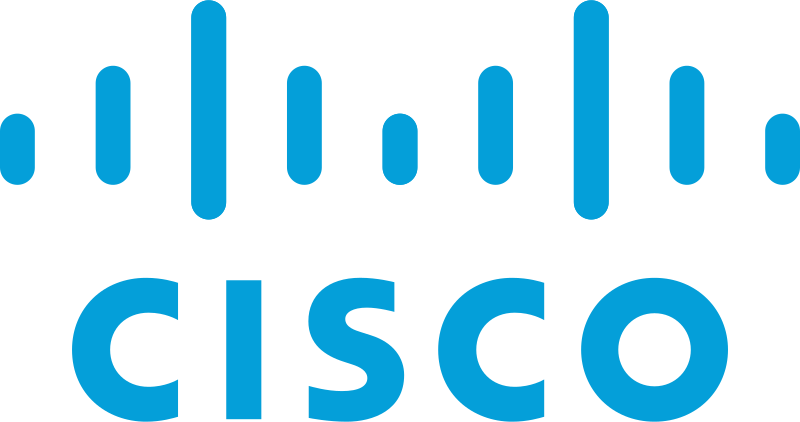Summary
- Multiple vulnerabilities in Cisco Identity Services Engine (ISE) could allow an authenticated, local attacker to perform command injection attacks on the underlying operating system and elevate privileges to root. To exploit these vulnerabilities, an attacker must have valid credentials on an affected device.For more information about these vulnerabilities, see the Details section of this advisory.Cisco has released software updates that address these vulnerabilities. There are no workarounds that address these vulnerabilities.This advisory is available at the following link:
https://sec.cloudapps.cisco.com/security/center/content/CiscoSecurityAdvisory/cisco-sa-ise-injection-QeXegrCw
Affected Products
- Vulnerable ProductsThese vulnerabilities affect Cisco ISE.For information about which Cisco software releases are vulnerable, see the Fixed Software section of this advisory.Products Confirmed Not VulnerableOnly products listed in the Vulnerable Products section of this advisory are known to be affected by these vulnerabilities.
Details
- These vulnerabilities can be exploited only by authorized users of the Cisco ISE system. As a best practice, customers can restrict console access and admin web access to specific or limited IP addresses. To configure the access restrictions, open the web-based management interface and choose Administration > System > Admin Access > Settings > Access > IP Access.The vulnerabilities are not dependent on one another. Exploitation of one of the vulnerabilities is not required to exploit the other vulnerability. In addition, a software release that is affected by one of the vulnerabilities may not be affected by the other vulnerability.Details about the vulnerabilities are as follows:CVE-2023-20175: Cisco ISE Command Injection VulnerabilityA vulnerability in a specific Cisco ISE CLI command could allow an authenticated, local attacker to perform command injection attacks on the underlying operating system and elevate privileges to root. To exploit this vulnerability, the attacker must have valid read-only or higher privileges on an affected device.This vulnerability is due to insufficient validation of user-supplied input. An attacker could exploit this vulnerability by submitting a crafted CLI command. A successful exploit could allow the attacker to elevate privileges to root.Cisco has released software updates that address this vulnerability. There are no workarounds that address this vulnerability.Bug ID(s): CSCwd07353
CVE ID: CVE-2023-20175
Security Impact Rating (SIR): High
CVSS Base Score: 8.8
CVSS Vector: CVSS:3.1/AV:L/AC:L/PR:L/UI:N/S:C/C:H/I:H/A:HCVE-2023-20170: Cisco ISE Command Injection VulnerabilityA vulnerability in a specific Cisco ISE CLI command could allow an authenticated, local attacker to perform command injection attacks on the underlying operating system and elevate privileges to root. To exploit this vulnerability, the attacker must have valid Administrator privileges on an affected device.This vulnerability is due to insufficient validation of user-supplied input. An attacker could exploit this vulnerability by submitting a crafted CLI command. A successful exploit could allow the attacker to elevate privileges to root.Cisco has released software updates that address this vulnerability. There are no workarounds that address this vulnerability.Bug ID(s): CSCwd41220
CVE ID: CVE-2023-20170
Security Impact Rating (SIR): Medium
CVSS Base Score: 6.0
CVSS Vector: CVSS:3.1/AV:L/AC:L/PR:H/UI:N/S:U/C:H/I:H/A:N
Workarounds
- There are no workarounds that address these vulnerabilities.
Fixed Software
- Cisco has released free software updates that address the vulnerabilities described in this advisory. Customers with service contracts that entitle them to regular software updates should obtain security fixes through their usual update channels.Customers may only install and expect support for software versions and feature sets for which they have purchased a license. By installing, downloading, accessing, or otherwise using such software upgrades, customers agree to follow the terms of the Cisco software license:
https://www.cisco.com/c/en/us/products/end-user-license-agreement.htmlAdditionally, customers may only download software for which they have a valid license, procured from Cisco directly, or through a Cisco authorized reseller or partner. In most cases this will be a maintenance upgrade to software that was previously purchased. Free security software updates do not entitle customers to a new software license, additional software feature sets, or major revision upgrades.The Cisco Support and Downloads page on Cisco.com provides information about licensing and downloads. This page can also display customer device support coverage for customers who use the My Devices tool.When considering software upgrades, customers are advised to regularly consult the advisories for Cisco products, which are available from the Cisco Security Advisories page, to determine exposure and a complete upgrade solution.In all cases, customers should ensure that the devices to be upgraded contain sufficient memory and confirm that current hardware and software configurations will continue to be supported properly by the new release. If the information is not clear, customers are advised to contact the Cisco Technical Assistance Center (TAC) or their contracted maintenance providers.Customers Without Service ContractsCustomers who purchase directly from Cisco but do not hold a Cisco service contract and customers who make purchases through third-party vendors but are unsuccessful in obtaining fixed software through their point of sale should obtain upgrades by contacting the Cisco TAC: https://www.cisco.com/c/en/us/support/web/tsd-cisco-worldwide-contacts.htmlCustomers should have the product serial number available and be prepared to provide the URL of this advisory as evidence of entitlement to a free upgrade.Fixed ReleasesIn the following table, the left column lists Cisco software releases. The center and right columns indicate whether a release is affected by the vulnerabilities that are described in this advisory and the first release that includes the fix for these vulnerabilities. Customers are advised to upgrade to an appropriate fixed software release as indicated in this section.Cisco ISE ReleaseFirst Fixed Release for CVE-2023-20175First Fixed Release for CVE-2023-201702.7 and earlier2.7P10Not vulnerable3.03.0P8Not vulnerable3.13.1P6Not vulnerable3.23.2P13.2P33.3Not vulnerableNot vulnerableFor instructions on upgrading a device, see the Upgrade Guides located on the Cisco Identity Service Engine support page.The Cisco Product Security Incident Response Team (PSIRT) validates only the affected and fixed release information that is documented in this advisory.
Source:
https://sec.cloudapps.cisco.com/security/center/content/CiscoSecurityAdvisory/cisco-sa-ise-injection-QeXegrCw
Related posts
Categories
Critical vulnerabiliities (86)
cyber crime (1)
Cyber Security (67)
Data breach (2)
DER (11)
Exploit (30)
Hacks (79)
ICS (518)
Industrial IoT (IIoT) (29)
IoT Security (79)
Market (49)
News (1224)
Recommendations (59)
Remediation (7)
Reports (12)
Security Patches (12)
Standards (3)
Tools (6)
Uncategorized (30)
Vulnerabilities (1096)
White Papers (33)


Stay connected